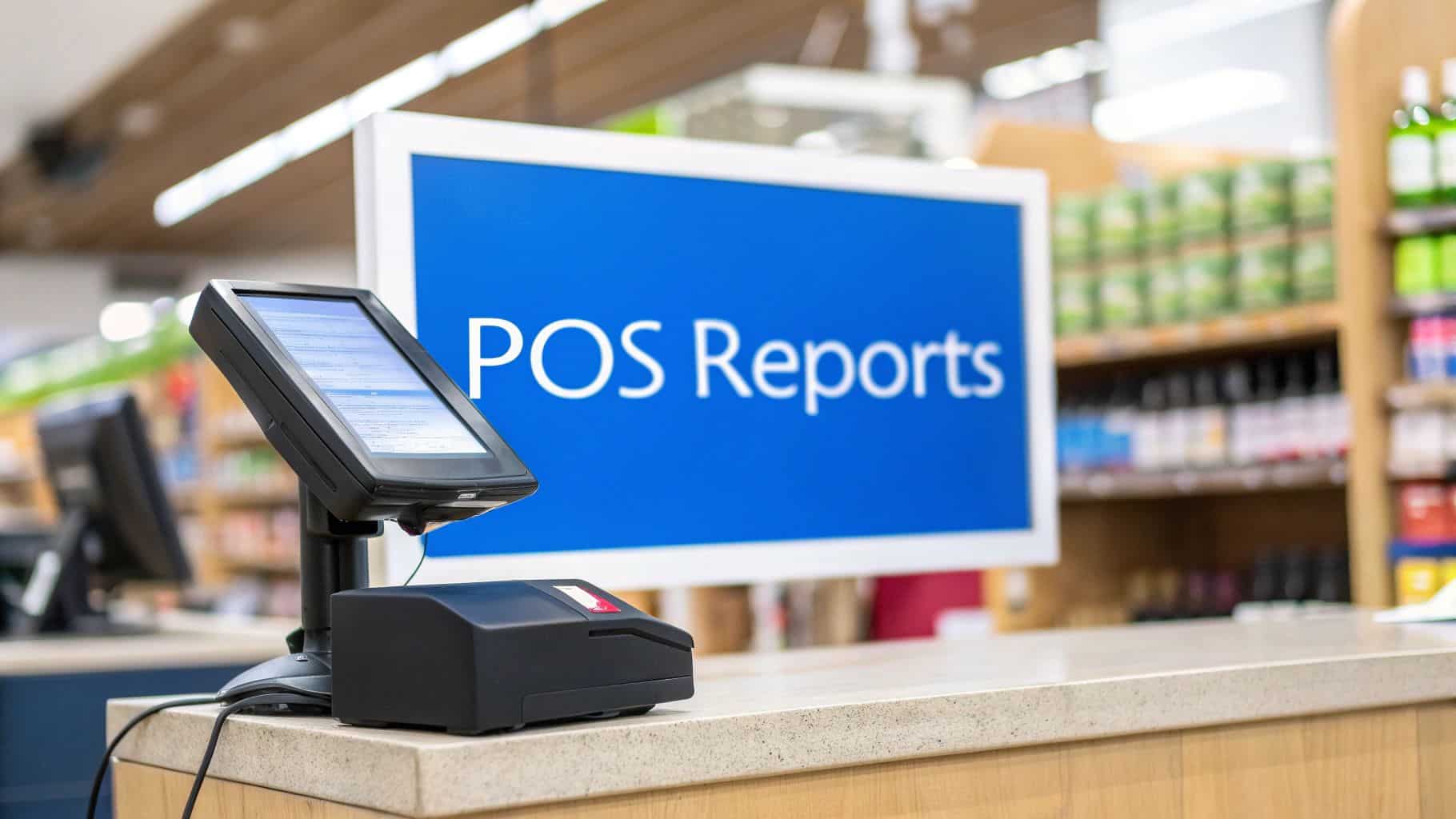Understanding the difference between fast food gross vs. net profit margin is essential for any restaurant owner aiming to run a profitable business. In the fast food industry, where competition is fierce and costs fluctuate daily, knowing how much money comes in versus how much actually stays in your pocket can make or break your success. Gross profit tells you the story of your revenue after covering direct food costs, while net profit shows what’s left after accounting for every other expense. By mastering these financial metrics, owners can improve restaurant profitability, forecast future earnings, and optimize overall business performance.
Table of Contents
- Gross vs. Net Profit Margin in Fast Food
- How to Calculate Gross Profit Margin
- Breaking Down Net Profit Margin
- The Impact of Expenses on Profitability
- Practical Ways to Improve Margins in Fast Food
- Why Biyo POS Helps Improve Profit Margins
- FAQ
Gross vs. Net Profit Margin in Fast Food
To fully understand restaurant financial performance, owners must first differentiate between gross and net profit margins. Gross margin focuses on revenue after direct food costs, while net margin digs deeper by subtracting all overhead, labor, and operational expenses. Both are critical for analyzing financial health in fast food businesses.
What is Gross Profit Margin?
Gross profit margin represents the percentage of revenue remaining after subtracting the cost of goods sold (COGS). In a fast food restaurant, this typically includes ingredients, packaging, and other direct food-related costs. For example, if you sell a burger for $10 and the food cost percentage is $3, your gross profit is $7, or a 70% gross margin. This straightforward calculation helps managers gauge how well they control their food and supply costs.
This metric helps restaurant owners understand how efficiently they manage food costs. A higher gross margin usually means better control over supplier pricing, portioning, and waste reduction. For instance, a store that reduces waste by 5% across all items may see thousands of dollars saved annually. In the fast food industry, gross margins tend to be high because food production costs are relatively low compared to menu prices, especially when compared to casual or fine dining establishments.
However, gross margin alone does not reflect the complete financial picture. It excludes rent, labor, utilities, marketing, and other significant costs that weigh heavily on fast food restaurants. That’s why business owners should not confuse gross profit with overall profitability. A burger chain might show strong gross margins but still struggle with losses due to rising payroll expenses or high franchise fees.
Understanding gross profit sets the foundation for diving into net income analysis, which considers every expense involved in running the business.
What is Net Profit Margin?
Net profit margin reflects the percentage of revenue left after subtracting all expenses, including COGS, labor costs, rent and utilities, overhead expenses, franchise fees, and taxes. It shows the true profitability of a fast food restaurant, making it a crucial metric for business performance. Without analyzing net margins, owners can be misled by healthy gross margins that disguise operational inefficiencies.
For instance, if your restaurant generates $100,000 in gross revenue but $90,000 goes toward expenses, the net profit margin is only 10%. This number is much lower than the gross margin but paints a more accurate picture of sustainability. Investors, lenders, and franchise operators often rely on net margins to assess long-term viability because it shows how much money remains after all commitments are met.
In fast food operations, net margins are often thin, averaging between 5% and 10%. This slim margin highlights the importance of effective cost control and expense tracking to keep profits steady despite fluctuating food and labor markets. A small increase in efficiency, such as reducing labor costs by 2%, can translate into a noticeable improvement in overall net profit.
Why Both Margins Matter in Fast Food
Both gross and net profit margins serve different but complementary purposes. Gross profit margin highlights how efficiently a restaurant manages food costs, while net profit margin uncovers the complete financial health of the operation. Relying on one without the other can give a misleading view of profitability, leaving business owners vulnerable to financial surprises.
Restaurant owners use gross profit margins to measure short-term efficiency and set menu pricing strategies. For instance, knowing the gross profit on each menu item allows managers to adjust pricing and maximize profitability. Meanwhile, net margins help evaluate long-term sustainability, cash flow, and expansion opportunities, ensuring the business model works beyond just daily sales.
Ignoring one of these figures can lead to financial blind spots. For example, focusing only on high gross profits might make an owner overlook skyrocketing payroll expenses or rising rent costs that erode net income. Monitoring both allows owners to take corrective action before small issues turn into long-term financial strain.

How to Calculate Gross Profit Margin
Gross profit margin calculation involves simple math but carries big implications for restaurant profitability. Fast food operators should calculate it regularly to monitor trends and spot inefficiencies.
Step 1: Determine Gross Revenue
Gross revenue is the total income generated from all sales before any deductions. In fast food, this includes burgers, fries, drinks, and combo meals. Tracking gross revenue is the first step in understanding business performance. Without it, profitability analysis cannot move forward, leaving gaps in financial reporting and planning.
Owners can track gross revenue daily, weekly, or monthly using POS systems. Consistent monitoring ensures accurate reporting and better revenue forecasting. It also helps identify peak hours, high-performing items, and seasonal sales patterns that influence profitability. For example, many fast food outlets generate higher sales on weekends, and analyzing these patterns can help schedule staff more effectively.
By accurately calculating gross revenue, restaurant owners build a foundation for determining food cost percentage and other crucial financial metrics. This step lays the groundwork for future expense tracking and enables better comparisons between different time periods or business locations.
Step 2: Subtract Cost of Goods Sold (COGS)
COGS represents the direct costs of preparing menu items, such as ingredients, condiments, packaging, and supplies. Fast food restaurants typically aim for a food cost percentage between 25% and 35% of gross revenue. Keeping COGS under control directly increases gross profit margins and safeguards long-term profitability.
To calculate gross profit, subtract COGS from gross revenue. For example, if gross revenue is $50,000 and COGS is $15,000, then gross profit is $35,000. This provides a clear view of how much money remains after food expenses. Without this calculation, restaurant owners risk overestimating profitability and making flawed financial decisions.
Effective supplier negotiation, portion control, and waste reduction are practical ways to lower COGS. Restaurants that monitor these numbers closely can significantly improve profitability. For instance, switching suppliers or standardizing recipes may reduce costs by 5%–10% without compromising quality, improving the gross profit margin almost immediately.
Step 3: Calculate the Gross Profit Margin Percentage
The gross profit margin percentage is calculated by dividing gross profit by gross revenue and multiplying by 100. Using the previous example, $35,000 divided by $50,000 equals 70%, meaning 70 cents of every dollar stays in the business after covering food costs. This figure is a key benchmark for comparing profitability between different timeframes or menu categories.
This percentage provides an at-a-glance measure of financial performance. It’s especially useful for comparing different menu items or locations. Higher-margin products like drinks often subsidize lower-margin items like combo meals, creating balance in profitability. Fast food chains often design promotions around this logic, bundling high- and low-margin products to maintain overall profitability.
Fast food operators should benchmark gross profit margins against industry standards to evaluate competitiveness. Consistent analysis also helps identify trends that signal when it’s time to adjust pricing or renegotiate supplier contracts. Restaurants that ignore these insights risk falling behind competitors who fine-tune pricing and expenses more effectively.
Breaking Down Net Profit Margin
While gross profit provides quick insights, net profit margin reveals the bigger picture of restaurant financial performance. Calculating it involves a deeper dive into all operating expenses beyond food costs.
Factoring in Operating Expenses
Operating expenses include payroll expenses, rent and utilities, marketing costs, and insurance. These are essential costs that keep the business running but significantly reduce profit margins. In fast food restaurants, payroll often accounts for 25%–30% of total revenue, making it the largest expense after food costs. Without managing payroll carefully, net profit margins can shrink rapidly.
Rent and utilities also weigh heavily, particularly in urban locations with high commercial kitchen costs. Efficient use of staff scheduling, energy conservation, and strategic marketing campaigns can help minimize these expenses. For example, switching to energy-efficient kitchen appliances may reduce electricity bills by thousands of dollars annually.
Owners who regularly track and analyze operating expenses gain greater control over net profit margins, ensuring sustainable growth. Expense tracking also allows them to identify patterns, such as seasonal spikes, and prepare budgets accordingly.
Accounting for Franchise Fees and Overhead
Many fast food restaurants operate under franchise agreements that require paying royalty fees, marketing contributions, and technology costs. These fees can take 4%–8% of gross revenue, further shrinking net income. Independent restaurants avoid these charges but may face higher marketing costs on their own, balancing out the equation differently.
Overhead expenses like equipment depreciation, cleaning supplies, and technology subscriptions also add up quickly. Without diligent expense tracking, these hidden costs erode profitability and leave owners questioning where their money went. A sudden repair bill for a fryer, for example, can reduce monthly profits drastically.
Restaurants that proactively budget for these recurring expenses avoid surprises and maintain stronger financial stability over time. This planning ensures smoother cash flow and helps owners allocate funds toward future growth opportunities.
Finalizing Net Income
After subtracting all expenses, the remaining amount is net income. Dividing this by gross revenue gives the net profit margin percentage, which is often slim in fast food operations. Even small improvements in cost control can significantly increase this figure and drive long-term sustainability.
For example, if gross revenue is $100,000 and total expenses are $95,000, net income is $5,000, resulting in a 5% net margin. While this may seem low, fast food restaurants rely on high sales volume to generate consistent earnings despite narrow margins. This volume-driven model distinguishes fast food from higher-margin but lower-volume dining categories.
Accurate financial reporting and break-even analysis are key tools for managing net income. These practices help owners plan for growth, adjust pricing, and evaluate overall restaurant profitability. Restaurants that skip regular reporting often struggle with surprise expenses and declining performance.
The Impact of Expenses on Profitability
Expenses have a direct impact on both gross and net profit margins. By understanding where money flows, fast food owners can identify opportunities to cut costs and boost financial performance. Every dollar saved on operations directly contributes to net income, which is why managing expenses effectively is critical for long-term sustainability.
Labor and Payroll Expenses
Payroll is one of the most significant costs in fast food, often surpassing rent or utilities. Since employees are needed to take orders, cook food, and manage daily operations, labor expenses are unavoidable. However, inefficiencies like overstaffing during slow hours or high turnover rates can inflate costs dramatically. Careful scheduling and staff retention strategies are essential to control these expenses without sacrificing service quality.
Scheduling efficiency, cross-training staff, and monitoring payroll expenses through digital tools can reduce unnecessary labor costs. For example, a restaurant that implements smart scheduling software might reduce payroll expenses by up to 10% annually. Cross-training employees to handle multiple roles, such as cash register and food prep, increases flexibility and reduces the need for excess staff during rush hours.
Owners who fail to control payroll risk shrinking already thin net margins. Rising minimum wages in many regions further emphasize the need for payroll management. By adopting automated time tracking and performance monitoring, managers can ensure labor costs align with actual demand. This practice not only controls expenses but also enhances staff morale by creating more balanced workloads.
Rent and Utilities
Commercial rents vary depending on location, but they typically consume 6%–10% of revenue. For fast food chains in busy urban areas, this percentage may climb higher due to the premium costs of high-traffic locations. Choosing the right location requires balancing visibility with affordability, ensuring that revenue potential outweighs fixed rent costs.
Utility costs like electricity, water, and gas also rise as customer demand increases. Kitchens with fryers, grills, and refrigeration systems consume large amounts of energy daily. Monitoring energy use and choosing efficient appliances can help cut these costs without compromising service quality. For instance, replacing outdated fryers with energy-efficient models may reduce utility bills by hundreds of dollars each month.
Negotiating favorable lease agreements and analyzing location profitability play crucial roles in keeping rent affordable. Restaurants must balance the benefits of high-traffic areas against higher operating costs when making site selection decisions. Owners who regularly evaluate these costs are better equipped to maintain profitability in competitive markets.
Marketing Costs and Customer Acquisition
Marketing campaigns, promotions, and discounts are essential for driving traffic but can eat into profit margins if not managed strategically. Many fast food restaurants allocate 3%–6% of revenue toward advertising, whether through print, digital, or television campaigns. Without tracking ROI, these costs can become financial drains rather than revenue drivers.
Tracking the return on investment (ROI) of each campaign helps ensure that marketing dollars contribute to net income rather than eroding it. For example, a social media campaign promoting combo deals might cost $2,000 but generate $10,000 in additional sales, providing a strong return. On the other hand, an underperforming campaign should be adjusted or discontinued to prevent wasted resources.
Digital marketing channels, loyalty programs, and referral incentives provide cost-effective alternatives to traditional advertising. Fast food restaurants that embrace data-driven campaigns often see higher profitability. Balancing marketing costs with customer acquisition ensures steady business performance without sacrificing profitability, keeping net margins intact even in competitive markets.
Practical Ways to Improve Margins in Fast Food
Improving profit margins requires deliberate strategies that touch every aspect of restaurant operations. From controlling food costs to refining staff efficiency, small adjustments add up to big results. By adopting a proactive approach, restaurant owners can maximize both gross and net profit margins, ensuring financial health and long-term success.
Streamline Food Cost Management
Lowering food costs is the most direct way to increase gross profit margins. Fast food restaurants often work with narrow margins, so even a 1% reduction in food costs can significantly improve profitability. Owners can achieve this by negotiating with local suppliers for better prices, standardizing portion sizes, and using real-time inventory systems to reduce waste.
Menu engineering is another effective strategy. Featuring high-margin items prominently on the menu increases sales of profitable products while still satisfying customer demand. For example, beverages and sides often carry higher margins than main dishes. By designing combo meals that pair high-margin items with lower-margin staples, restaurants balance revenue while improving overall profitability.
Seasonal specials can also help balance supplier fluctuations and keep menus fresh. For instance, promoting a limited-time seasonal drink with a high margin can offset the rising cost of staple ingredients like beef or chicken. Tracking food cost percentage regularly ensures that owners spot these changes early and make timely adjustments.
Optimize Labor Scheduling
Smart labor scheduling ensures that staffing aligns with customer demand without overspending. By analyzing peak hours and using forecasting tools, restaurants can minimize downtime and avoid overstaffing during slow periods. This balance directly protects net profit margins and ensures customers always receive efficient service.
Cross-training employees provides flexibility during rush hours and reduces the need for excessive hiring. Staff who can handle multiple roles add value while lowering payroll expenses. For example, an employee trained in both front-of-house operations and food preparation can fill gaps quickly, saving the restaurant from hiring additional staff for short shifts.
Investing in training also boosts employee performance and reduces turnover costs. Employees who feel confident in their roles tend to stay longer, which lowers recruitment and onboarding expenses. Ultimately, labor optimization increases productivity while safeguarding profitability.
Leverage Technology for Expense Tracking
Modern POS systems play a crucial role in financial management. By integrating expense tracking, payroll monitoring, and inventory control, these tools give owners real-time visibility into their finances. This reduces human error and enables faster decision-making when profitability is at risk.
Automated reporting allows for quick break-even analysis and revenue forecasting. Owners can compare performance across multiple locations and identify which units generate stronger net profit margins. For example, one branch might have higher gross profits but weaker net profits due to higher rent, a detail that only becomes clear with technology-driven analysis.
Restaurants that embrace technology stay ahead of competitors by managing costs effectively while improving operational efficiency. Tools like Biyo POS provide insights that allow owners to act before small problems escalate, ensuring both gross and net profit margins remain strong in the long run.

Why Biyo POS Helps Improve Profit Margins
Managing fast food gross vs. net profit margin becomes much easier with the right tools. Biyo POS offers an all-in-one solution that combines inventory management, payroll monitoring, and financial reporting. By giving restaurant owners complete visibility into expenses and sales, Biyo POS helps improve both gross and net profit margins significantly.
Owners using Biyo POS benefit from features like real-time expense tracking, menu profitability analysis, and automated reporting. These tools save time, reduce mistakes, and highlight areas where cost control can increase profits. For instance, if food costs begin to rise due to supplier changes, the system can alert managers immediately, allowing them to renegotiate or adjust menu prices before profits suffer.
Fast food operators can schedule a call to learn how Biyo POS supports their growth with tailored solutions. For restaurants ready to take action, signing up for Biyo POS is quick and easy through this online signup page. By investing in smarter systems, fast food owners can secure long-term profitability and sustainable growth while staying ahead of competitors.
FAQ
What is the average net profit margin for fast food restaurants?
The average net profit margin in the fast food industry is usually between 5% and 10%. This reflects the high-volume, low-margin nature of the business. Even though the margin is slim, selling thousands of meals daily helps these restaurants generate strong overall profits.
How can I reduce food costs in my restaurant?
You can reduce food costs by negotiating better supplier deals, monitoring portion sizes, and reducing waste. Simple changes like recipe standardization and accurate inventory tracking help keep food cost percentages within target ranges.
Why do gross and net profit margins differ so much?
Gross profit margin only considers food costs, while net profit margin accounts for every expense such as labor, rent, and marketing. This is why net margins are much smaller and give a more realistic view of profitability.
How often should I calculate profit margins?
It’s best to calculate gross and net profit margins at least monthly. Some restaurants do it weekly for closer control. Frequent tracking helps catch issues early and ensures healthy financial performance.
Can technology help improve profit margins?
Yes. POS systems like Biyo POS provide real-time data on sales, expenses, and inventory. With features like automated reporting and inventory management, restaurants can improve both gross and net profit margins more easily.




